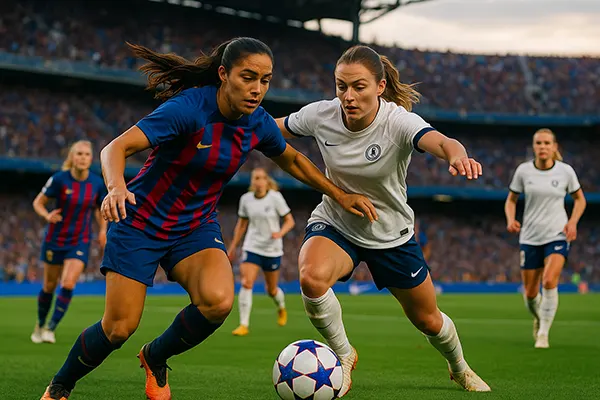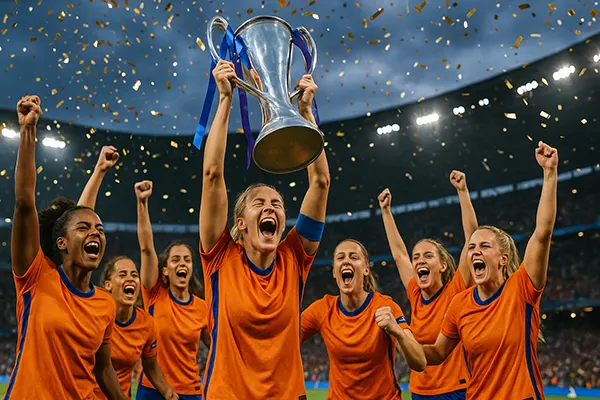
Women’s Champions League 2025: New Format, Broadcasts, and Winner Predictions
The 2025 Women’s Champions League marks a defining chapter in the evolution of European women’s football. With UEFA introducing a new competition structure, expanded media coverage, and unprecedented global interest, this season promises to reshape the sport’s future. Below, we explore the format changes, broadcast partnerships, and the most realistic title contenders based on current team performance.
Revolutionary Format Changes in 2025
UEFA has officially confirmed that from 2025, the Women’s Champions League will adopt a modernised “Swiss-style” format. This system replaces the traditional group stage with a single league table, where each club plays a series of matches against randomly drawn opponents of varied strength. The new structure aims to enhance competitiveness and ensure more balanced fixtures throughout the season.
The league phase will include 18 clubs instead of 16, providing additional qualification spots for smaller leagues. The top eight teams will progress directly to the knockout rounds, while those ranked ninth to sixteenth will compete in play-offs to secure their places. This approach mirrors recent men’s competition reforms, offering fans more matches featuring Europe’s elite.
Moreover, UEFA emphasises financial and developmental goals behind the change. The revised format increases prize money distribution, supports grassroots programmes, and guarantees more exposure for emerging players and clubs. It reflects UEFA’s broader commitment to gender equality and the sustainable growth of women’s football across Europe.
How the New System Impacts Competitive Balance
The introduction of the Swiss model significantly reshapes the dynamics between top-tier and mid-level teams. While dominant clubs like Barcelona, Lyon, and Chelsea maintain an advantage through squad depth, the revised draw system allows developing teams from Scandinavia, Eastern Europe, and the Balkans to gain valuable experience and visibility.
Statistically, more balanced fixtures mean fewer predictable outcomes and a stronger sense of unpredictability. This could lead to surprise quarter-finalists, creating excitement and broader interest from global audiences. Smaller clubs also benefit financially through additional match revenue and international media rights.
UEFA’s analytics department projects that by 2026, competitive balance could improve by up to 15%, based on the performance of clubs from previously underrepresented nations. This evolution reflects a long-term strategy to make the Women’s Champions League a truly pan-European competition, not dominated solely by Western Europe’s powerhouses.
Global Broadcast Expansion and Digital Integration
In 2025, UEFA has strengthened its partnership with DAZN, which remains the primary global broadcaster of the Women’s Champions League. All fixtures will be available through DAZN’s streaming service and YouTube channel, maintaining free access for fans in many regions. This partnership continues to play a crucial role in popularising women’s football worldwide.
New broadcast deals have also been finalised with national networks such as BBC (UK), RMC Sport (France), and Viaplay (Scandinavia). These partnerships ensure high-definition coverage, professional commentary, and extensive pre-match analysis, reflecting the growing commercial and cultural value of the women’s game.
Additionally, UEFA has launched an integrated mobile app for live statistics, tactical data, and behind-the-scenes content. The inclusion of augmented reality replays and interactive fan voting for “Player of the Match” enhances engagement, making the Women’s Champions League one of the most technologically advanced competitions in world football.
Fan Engagement and Audience Growth
Since DAZN’s global rights acquisition in 2021, audience numbers have multiplied exponentially. By 2024, cumulative viewing figures exceeded 400 million worldwide, and projections for 2025 anticipate further growth due to accessibility and time-zone-friendly scheduling. UEFA’s data-driven marketing strategy aims to attract younger audiences, particularly through TikTok, Instagram, and streaming platforms.
Fan zones across European cities will return in 2025, offering local screenings, autograph sessions, and grassroots tournaments. Such initiatives bridge professional and amateur football, encouraging participation and representation across genders and age groups.
Most importantly, female athletes are gaining unprecedented media visibility. Clubs now allocate specialised PR teams and photographers to promote women’s squads equally with men’s, contributing to fairer coverage and inspiring future generations of players.

Analysing the Leading Contenders for the 2025 Title
The competition landscape in 2025 remains fierce, with several European giants positioning themselves as prime contenders for the trophy. FC Barcelona Femení, reigning champions, continue to dominate both domestically and internationally, relying on their creative midfield led by Aitana Bonmatí and Alexia Putellas. Lyon, meanwhile, have reinforced their defence and aim to reclaim their historic dominance under coach Sonia Bompastor.
English clubs Chelsea and Arsenal have also evolved tactically. Chelsea’s new signings, including US forward Sophia Smith, have added depth and pace to their attacking line. Arsenal, revitalised by their tactical consistency and academy investments, are predicted to reach at least the semi-final stage this season.
Dark horses like Wolfsburg and PSG cannot be overlooked. Wolfsburg’s emphasis on youth development and PSG’s attacking flexibility could lead to unexpected breakthroughs. Analysts suggest that the final may once again feature Barcelona versus a French or English rival, with bookmakers currently ranking Barcelona as favourites at odds of 3/1.
Predictions and Expert Opinions
Football analysts across Europe highlight the tactical evolution in women’s football as the defining factor of the 2025 season. Teams are becoming more adaptable, blending technical precision with physical intensity, a trend seen prominently in England’s Women’s Super League and France’s Division 1 Féminine.
According to data from Opta and UEFA’s technical reports, pressing intensity and positional rotations are at an all-time high. Clubs investing in performance analytics, such as Barcelona and Chelsea, are statistically outperforming teams relying solely on traditional training approaches.
While predictions vary, experts widely agree that 2025 will be the most competitive season in the history of the Women’s Champions League. The combination of strategic reforms, expanded broadcasting, and growing fan involvement is setting a new benchmark for women’s football globally.
